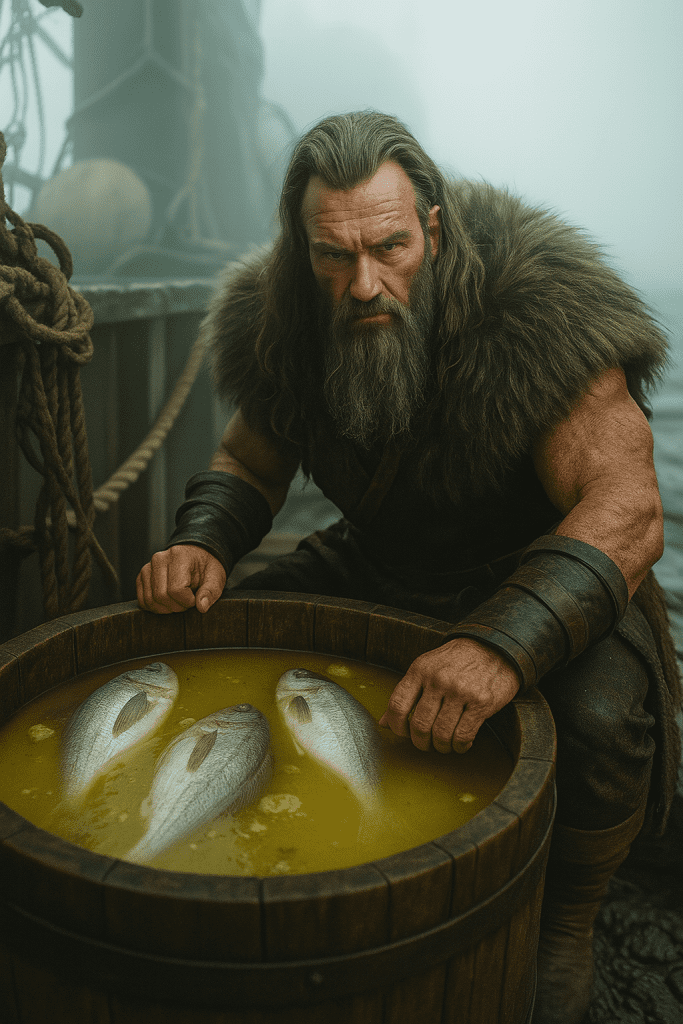When we think of Vikings, we often picture fierce warriors, roaring longships, and snowy Nordic landscapes. But what’s rarely discussed is how these legendary seafarers managed to survive weeks sometimes months at sea with limited supplies. And one of their most unexpected survival tools? Urine. Yes, really.
Long before refrigeration, the Vikings faced a major challenge: how to preserve food, especially fish, during their lengthy ocean journeys. Sailing across freezing, stormy waters from Scandinavia to far-flung coasts, they needed protein that wouldn’t spoil. With no iceboxes or fancy storage methods, they had to get creative and that’s where human urine came into the picture.
It might sound bizarre today, but the science behind it actually checks out.

Why Urine? It’s All About Ammonia.
Fresh urine contains urea, which, over time, breaks down into ammonia a compound known for its antibacterial properties. In small, controlled amounts, ammonia can kill or slow the growth of bacteria that cause food to rot. The Vikings figured out that if they soaked or fermented fish in urine for long enough, it would stay edible far longer than fish left to the mercy of the elements.
Video:
The Viking Edge: Berserker Mushrooms, Urine Fire Starters & Norse Explorers!
This method likely evolved from experimentation and necessity. Vikings were brilliant at using what was available in their harsh environments. In places where salt was scarce or expensive, urine became a more accessible option for food preservation.
It wasn’t necessarily a pleasant process or product. The fish would take on a sharp, pungent smell and flavor. But in an age of survival, taste was secondary to not starving on the open sea.
Not Just Vikings: A Wider Tradition
Interestingly, the use of urine or ammonia-rich compounds to preserve food wasn’t exclusive to the Vikings. Similar techniques existed in other parts of the ancient world. In Iceland, a traditional dish called hákarl (fermented shark) is still made today using similar principles. The meat is buried and left to ferment, during which time natural ammonia forms making the dish safe (though challenging) to eat.
So, the Viking method wasn’t just a desperate last resort it was part of a broader historical understanding of fermentation, chemistry, and practicality. They knew how to make their resources work.

Survival Smarts That Still Fascinate Us Today
The idea of preserving fish with urine might make modern stomachs churn, but it highlights the resourcefulness of Viking culture. These were people who braved some of the toughest conditions on Earth and still managed to travel, trade, raid, and explore long before GPS, canned food, or thermal wear.
Video:
What Viking Diets Were Really Like
More than brutal warriors, Vikings were problem-solvers. Their survival depended not just on strength, but also on clever hacks like this turning even the most unthinkable substances into tools of survival.
So the next time you hear about Viking legends, remember: while they were conquering coastlines and navigating wild seas, they were also relying on a surprisingly smart if stomach-turning scientific trick to keep themselves alive.
That’s innovation. That’s survival. That’s Viking grit.


